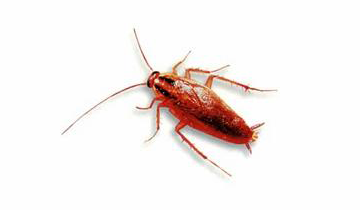Bed Bugs vs Flea Bites: How To Differentiate and Prevent Them
Bed Bugs vs Flea Bites: How To Differentiate and Prevent Them
Bed bugs and fleas can live inside the home and feed on you, your family, and pets. At first glance, it is difficult to tell their bites apart as both are accompanied by itchiness and red swelling. When not properly identified, the problem cannot be treated, resulting in several diseases that can be passed from one person or animal to another. This is why it is important to be able to differentiate a bed bug bite from a flea bite, especially if you have children or pets living with you. The Shar Pei and French Bulldog, in particular, are especially prone to harboring ticks and fleas.
Characteristics of Bed Bug Bites
Bed bugs are small, flat insects that can be found in many items in your home – from your mattress to your couch, and from your curtain folds to the crevices in your walls. These pests prefer to feed on human blood, but they can also bite pets. Often, you won’t feel the bite because these insects inject a mild anesthetic that numbs the bitten area. You will only notice the bite when your skin starts to itch, burn, or develop red, swelling welts 24 to 48 hours after.
In general, bed bug bites look similar to mosquito bites but have a purplish colour. They usually appear on the areas of the body, like the neck and arms, that are exposed when a person or animal sleeps. They are incredibly uncomfortable and can even pose significant health risks when left ignored. In severe cases, the bites can increase the likelihood of a secondary skin infection, turn into blister-like inflammations, or lead to a swollen tongue. Medical attention is advised if the affected person starts to experience breathing difficulty, nausea, fever, or irregular heartbeat.
Characteristics of Flea Bites
Fleas are small, wingless insects that have flat bodies and powerful legs, allowing them to jump long distances. While they prefer to feed on the blood of animals, they also feed on the blood of humans when there is no other source of food. These pests tend to hide in bedding, furniture, and floor cracks. They breed in warm and moist places, making infestations worse during the summer season.
Similar to bed bug and mosquito bites, flea bites usually appear as tiny, reddish dots on an animal’s body. Often found on the elbows, waist, ankles, and knee pits, they present themselves as three small bumps or a cluster of tiny dots that are very itchy and uncomfortable. Unlike bed bug bites, they can be felt almost instantly.
Typically, fleas do not spread disease to those they feed on. However, they can sometimes cause raised welts, breathing difficulties, and coloured discharge to those they bite. This is because these pests transmit germs through their feces, which can make it into an open wound when the person or animal that has been bitten tries to scratch the bite.
Bed Bug Bite Prevention
Luckily, there are easy ways to control and clear bed bug infestations in the home. It is important that you choose furniture that does not have crevices, seams, or cracks in them. These include metal, plastic, stone, and plaster materials. Should you find any cracks on your household items, fill or seal them with glue or calking.
Next, wash and dry your bedding and linens regularly. Heavy bedding items, such as pillows and comforters should be cleaned using high heat on the washer. Upholstered items should also be vacuumed or hand steamed thoroughly to kill the eggs and bugs.
Finally, cover as much skin as you can when you are sleeping. Remember, any room or item that has one bed bug often means there are much more.
Flea Bite Prevention
The best way to make sure that you, your family, and your furry friends don’t get a flea bite is to keep your pets flea-free. You can get rid of these pests by bathing your pet regularly and combing it using a fine-tooth flea comb. You can also buy your pet over-the-counter medications that can be taken orally or applied to its skin or collar.
Fleas live on surfaces in homes. They do not live on pets. Instead, they jump on animals to eat. Therefore, you should regularly wash and vacuum your pet’s bedding, your carpet, your sofa, and your cushions. You may also use flea spray on your upholstered furniture.

